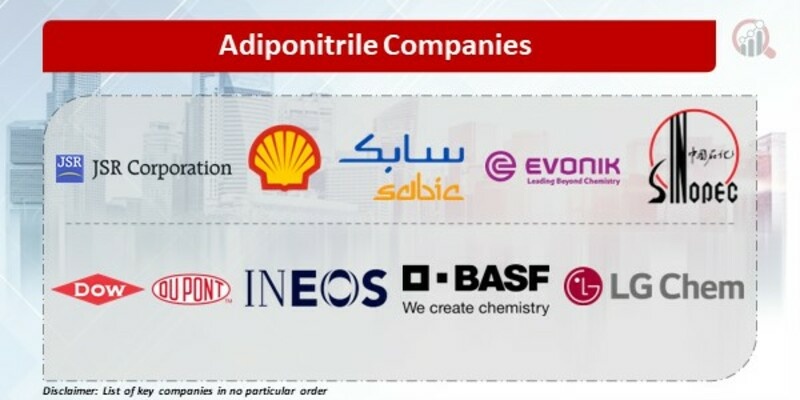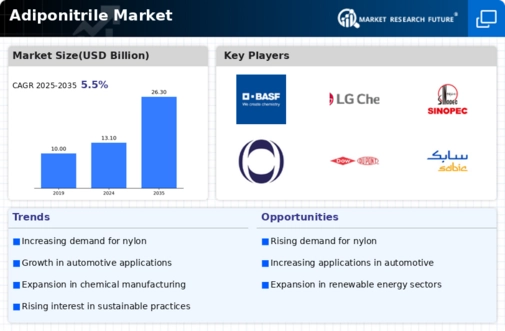Top Industry Leaders in the Adiponitrile Market
 The global adiponitrile market, driven by its crucial role in nylon 6,6 production and its applications across diverse industries like textiles, automotive, electronics, and construction. This dynamism attracts competition from established players and innovative startups, shaping a unique market landscape.
The global adiponitrile market, driven by its crucial role in nylon 6,6 production and its applications across diverse industries like textiles, automotive, electronics, and construction. This dynamism attracts competition from established players and innovative startups, shaping a unique market landscape.
Strategies for Market Share Dominance:
-
Product Diversification: Leading players like Asahi Kasei Corp. and DuPont are expanding their portfolios beyond adiponitrile to include high-purity grades and derivatives like hexamethylene diamine (HMD), catering to specialized applications and unlocking new customer segments. -
Geographical Expansion: Emerging markets like China and India, with their booming construction and automotive sectors, present lucrative opportunities. Companies like Invita Chemicals are ramping up production in these regions to capture local demand. -
Technological Innovation: Continuous research and development efforts focus on optimizing production processes, reducing environmental impact, and developing sustainable bio-based adiponitrile alternatives. <strong>INVISTA's** EcoPaX® technology exemplifies this trend, aiming for reduced energy consumption and waste generation. -
Vertical Integration: Integrating backward into raw materials or forward into nylon 6,6 production secures supply chains and strengthens market positions. Ascend Performance Materials, with its integrated adiponitrile and nylon 6,6 operations, is a prime example. -
Strategic Partnerships and Acquisitions: Collaborations with technology providers, distributors, and downstream players facilitate market penetration and knowledge sharing. DuPont's joint venture with BASF for nylon 6,6 production in China is a strategic move in this direction.
Factors Influencing Market Share:
-
Production Capacity and Geographical Distribution: Players with large, strategically located production facilities have a cost advantage and can cater to regional demands efficiently. -
Product Quality and Consistency: Stringent quality standards and reliable supply chains are crucial for attracting long-term contracts with major industry players like automotive manufacturers. -
Pricing Strategies: Balancing competitive pricing with profitable margins is key, especially in a market susceptible to raw material price fluctuations. -
Environmental Footprint and Sustainability Practices: Growing regulatory pressure and consumer preference for eco-friendly products favor companies with sustainable production processes and bio-based alternatives. -
Regulatory Landscape: Navigating complex regulations on chemicals and environmental protection across different regions requires agile adaptation and compliance strategies.
Key Players
- BASF (Germany)
- LG Chem (South Korea)
- Sinopec (Beijing)
- Ineos (Germany)
- DowDuPont (US)
- Evonik Industries (Germany)
- SABIC (Saudi Arabia)
- Royal Dutch Shell (The Netherland)
- JSR Corporation (Japan)
Recent Developments
-
September 2023: European Union proposes stricter restrictions on adiponitrile emissions, prompting industry players to invest in emission control technologies. -
October 2023: U.S. Department of Energy grants funding to a research project developing sustainable adiponitrile production from corn stover, supporting the bio-based market segment. -
November 2023: A fire at a major adiponitrile plant in China disrupts global supply chains and temporarily boosts prices, highlighting the risk of production disruptions. -
December 2023: Several industry reports predict moderate growth for the adiponitrile market in 2024, driven by the recovery of major downstream industries and growing adoption of bio-based alternatives.









